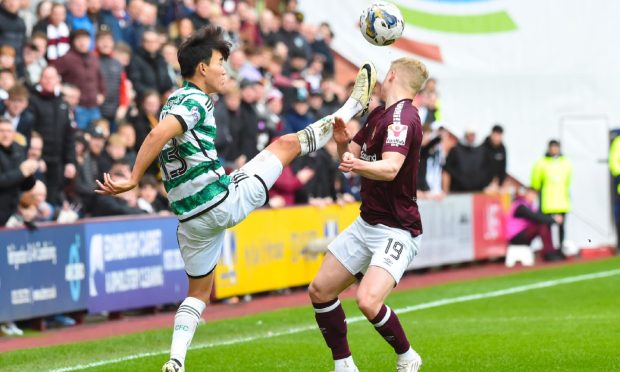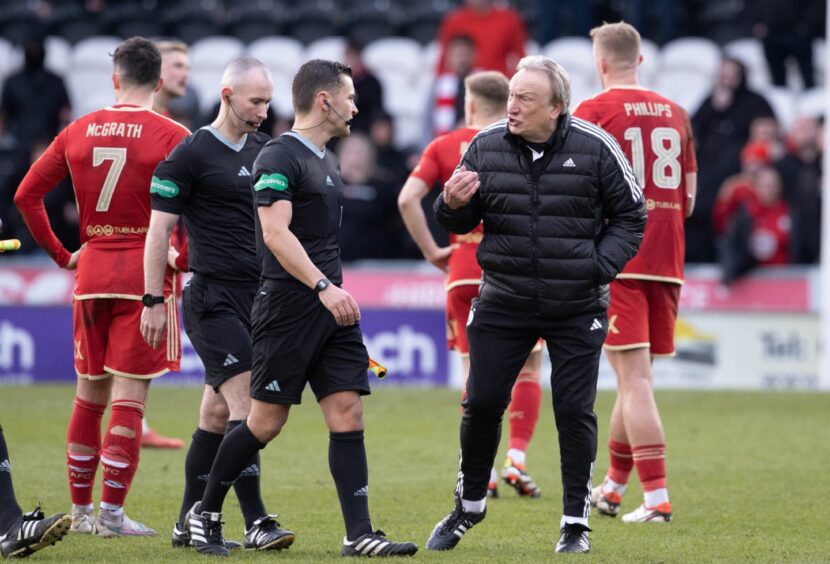In what has become an increasingly recurring and painful theme, VAR once again dominated our top-flight game last weekend.
This time round the main controversy stemmed from Paisley, where the Dons conceded a stoppage time spot-kick, and Tynecastle, where there was a litany of interventions.
For what it’s worth, I thought it was a penalty for St Mirren, Nicky Devlin fouling Toyosi Olusanya just inside the area, and I believed the sending-off of Yang Hyun-Jun in the capital was also the correct decision, the authorities justified in rejecting Celtic’s appeal.
However, neither of the spot-kicks awarded in that match should have stood.
I was surprised VAR declined to recommend Don Robertson review his original decision for the first; if anything, it was Yang who initiated the contact with Alex Cochrane.
And I was baffled when I eventually saw why the home side had been awarded their spot-kick.
At the time, like everyone inside the stadium, including the players, I was unaware anything even remotely dubious had occurred.
When I later saw the footage, my bewilderment increased. Tomoki Iwata had no idea where the ball was, was nudged by his team-mate, and his arm was in an entirely natural position given those circumstances. I simply do not understand why the incident was flagged up.
There are so many areas of concern when it comes to VAR.
First and foremost, the officials do not always seem to be adhering to the ‘clear and obvious mistake’ guideline. All too often it appears they are, as Brendan Rodgers claimed, re-refereeing the game. He is by no means the first manager to make that suggestion; he will not be the last.
Those in the VAR booth are intervening too often and getting involved in situations they could easily let go.
The system was designed to aid on-field officials, to right the wrongs that understandably happen during a fast-paced football match, to correct human error. It was not put in place so referees sitting in front of monitors could trawl through footage searching for the minutest of indiscretions.
Slowing the game down too much
One other aspect, and it is linked to the above, is the time taken to arrive at a decision.
I have heard it suggested that if the final call proves to be correct, the length of time taken is irrelevant, and to an extent that is true, but too often that decision still seems debatable, and if it takes five, six or more minutes to get there, can the ‘error’ really be said to have been clear and obvious?
At Cove on Tuesday night, we looked to have equalised late against Falkirk, only for the linesman to raise his flag. A quick look at the footage showed Rumarn Burrell to be onside; the goal should have stood.
VAR would have given it, and the team would have collected a valuable point, but I remain delighted the system is not in place in League One where officials, doing the best job they can, will inevitably make genuine mistakes.
At least they happen in real time, and the game is better for that. No interminable delays or constant reruns with no guarantee of the correct call being reached even then. It is football as it should be; the game we all fell in love with.

